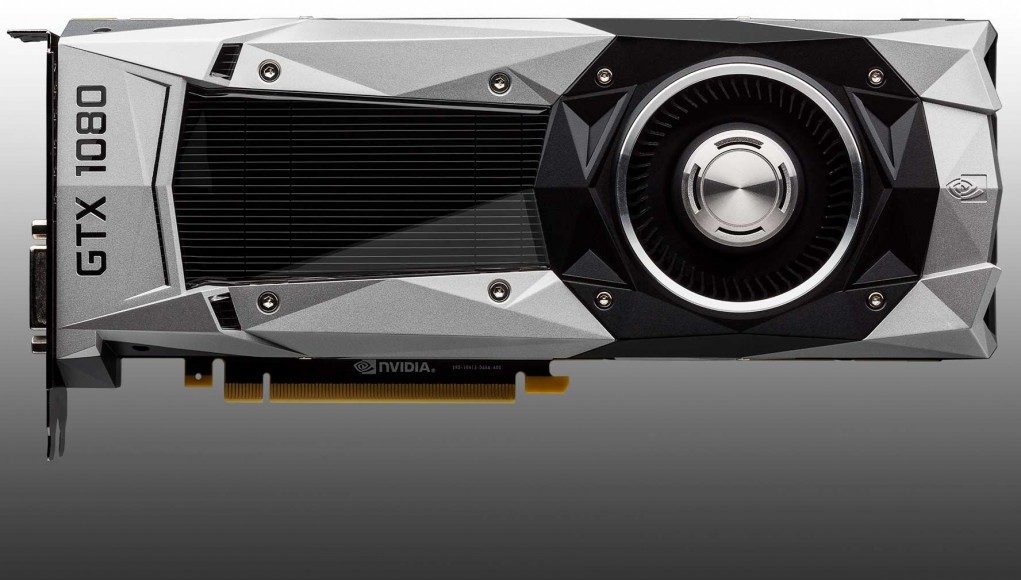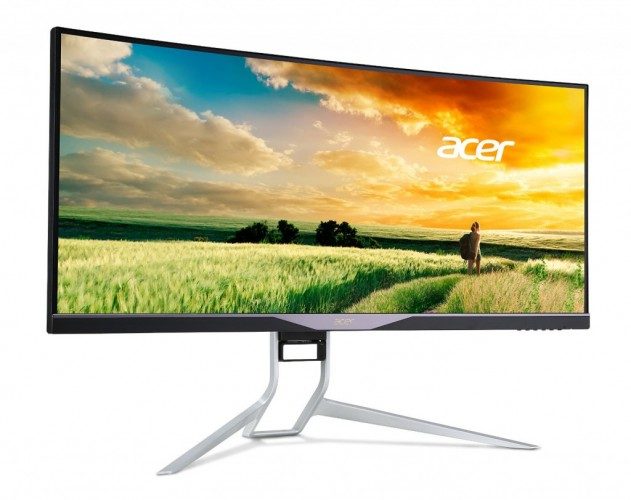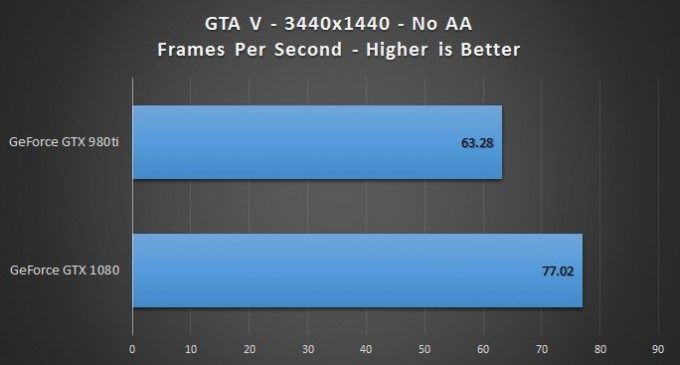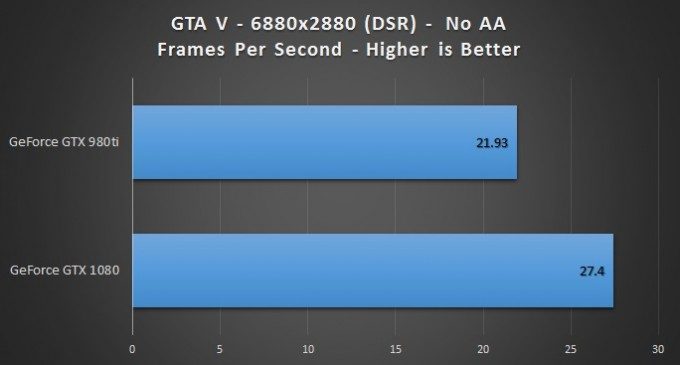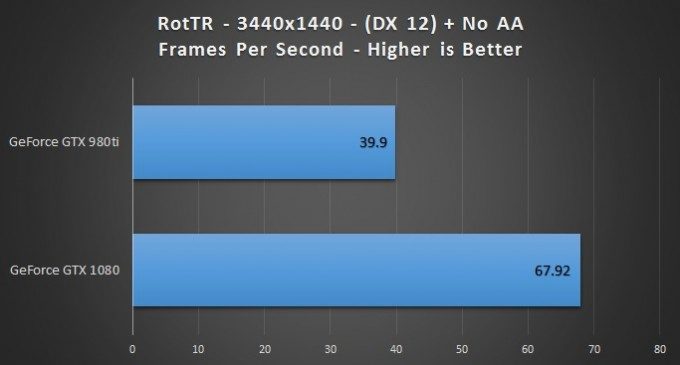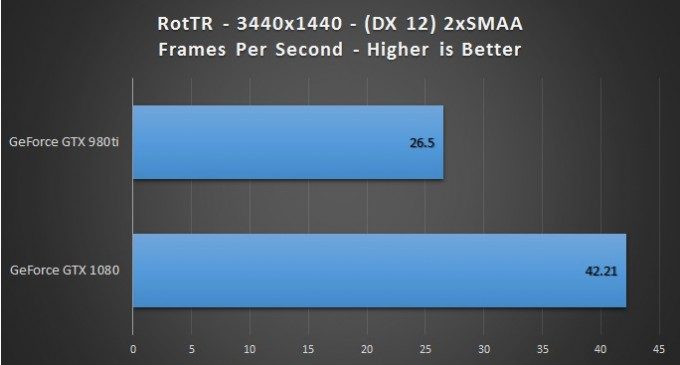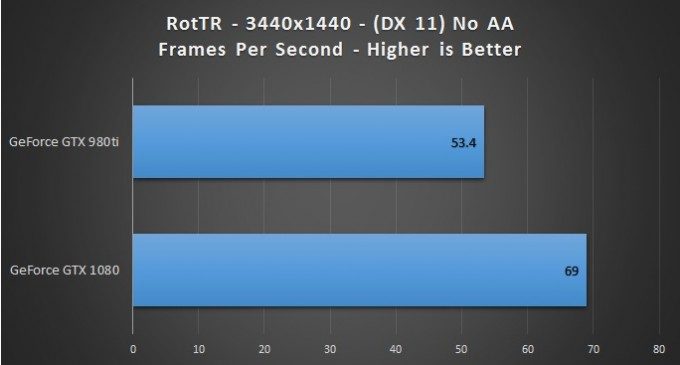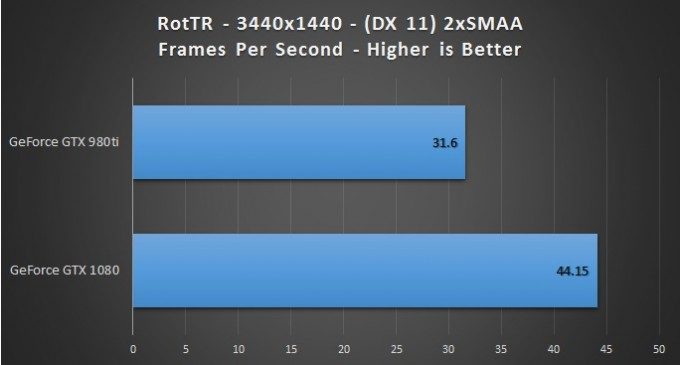Table of Contents
Standard Gaming Performance
Even the most ardent of VR fanatics occasionally takes time out to enjoy the odd standard game or two, so rendering performance in standard monitor bound titles has to be a big factor in whether the new GTX 1080 represents a worthwhile purchase. Also, our chosen titles represent a real workout for even these top-end GPUs, especially at the 3440×1440 native resolution of Asus’ X34 Predator monitor. How well the GTX 1080 does here will indicate how much raw power the GPU brings to the VR table too.
Grand Theft Auto V
In the spirit of pushing these highly capable cards, and in recognition of their price tags, we decided to max out settings for all games in this series, with some caveats. For GTA V, every setting under the standard ‘Graphics’ and ‘Advanced Graphics’ section was set to the highest available, with the exception of ‘Reflection MSAA’ which was turned off. Scores are based on the included benchmark and are supplied as average FPS scores. Resolution and Anti-aliasing levels are noted per test graph.
Rockstar pulled out all the visual stops for the PC iteration of GTA V and the higher the resolution, the more you appreciate the game’s impressive looks. Even with no AA, GTA V is a visual treat and both cards deliver very playable frame rates, but the GTX 1080 manages to deliver a comfortable increase in performance next to the 980 Ti, delivering a convincing, although not explosive 19% lead over the older card.
For the next test, we pushed both cards to the limit with a punishing benchmark utilising Nvidia’s DSR (Dynamic Super Resolution) technique to render the game at twice our test monitor’s native resolution, before down sampling and displaying the resulting image. The point? Super sampling the image in this way can deliver stunning image quality and sharpness with removal of jaggies and an all-round richer image. This is, effectively, extreme AA in effect.
The 980 Ti puts up a decent fight here delivering 21 FPS on average, but the GTX 1080 manages a (very nearly) playable 27FPS, close to the generally accepted minimum threshold for games of 30FPS. With overclocking (which we’ll deal with in a later article) the GTX 1080 crosses this playability threshold giving gamers a pretty astounding resolution option.
Rise of the Tomb Raider
 DirectX 12 is the future as far as Windows gaming is concerned (no emails please Open GL fans!) and games with DX12 support are now filtering through finally, so we chose Rise of the Tomb Raider as a particularly gorgeous (and demanding) example. Every setting is again set to its highest available, once again AA and resolution are noted per graph.
DirectX 12 is the future as far as Windows gaming is concerned (no emails please Open GL fans!) and games with DX12 support are now filtering through finally, so we chose Rise of the Tomb Raider as a particularly gorgeous (and demanding) example. Every setting is again set to its highest available, once again AA and resolution are noted per graph.
Right out of the gate the new GTX 1080 demonstrates its prowess in DX12 with an impressive 50% gain over its older brother with no AA applied. Seeing the game run at this resolution and aspect ratio with every setting maxed is a real treat to behold with the 1080 delivering an eminently playable 67 FPS.
The disparity in performance continues when engaging SMAA too. This anti-aliasing method is more compute intensive than the relatively lightweight FXAA, but the difference in quality is often pretty substantial. The GTX 1080 once again rules the roost with a gratifying 45% lead over the GTX 980 Ti.
Moving to Rise of the Tomb Raider‘s DirectX 11 renderer puts the 980 Ti on more a more comfortable footing it seems and sees it closing the gap on the GTX 1080, but the Pascal-based card still manages to command a solid 25% lead.
Finally, engaging 2 x SMAA in DX11 highlights the 1080’s headroom nicely as it pushed an average 44 FPS, 33% more than the GTX 980 Ti.

